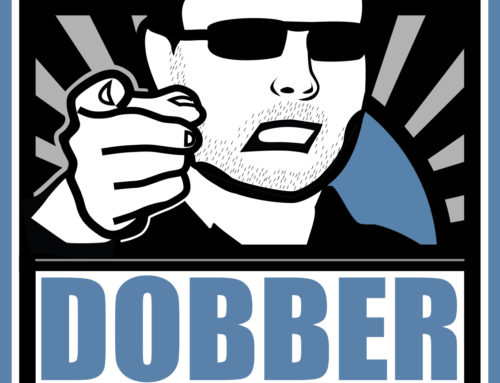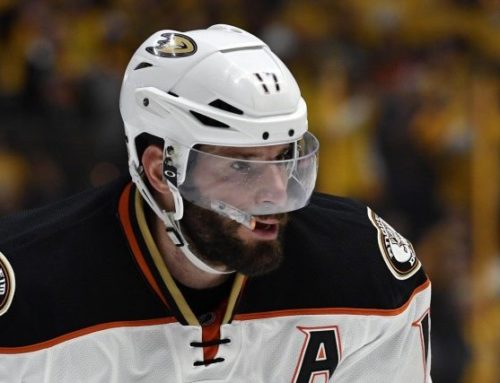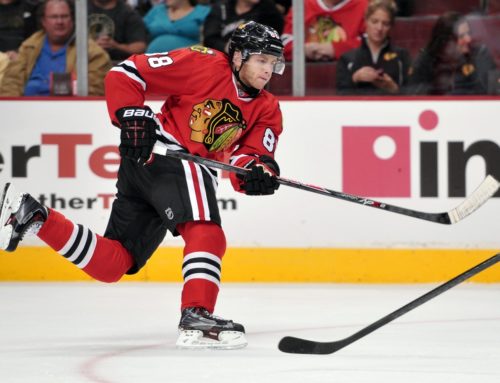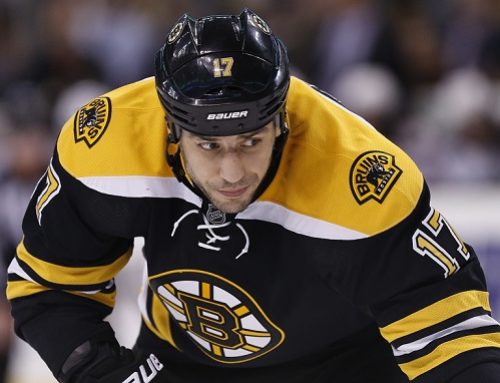
Last Monday, I revealed one way in which fantasy managers can get a pulse on some future top-flight prospects via the Hockey Canada Program of Excellence goalie camp. As a result, we all learned about the viable long-term future of guys like Mark Visentin, Tyler Bunz and the small but fiery Alex Dubeau.
Speaking of small but fiery, with Game 6 of the Stanley Cup Final just a few hours away, the goaltending world continues to discuss, compare and contrast the differences between the more popular blocking butterfly style employed by Roberto Luongo and the avant-garde, reaction-based hybrid butterfly style employed by Tim Thomas.
As I explained in my new piece on NHL.com, Thomas' elite cognitive skills have been the driving force behind his ability to play so well in the Stanley Cup Finals. Please take a few minutes to read the piece, including interesting quotes from Dallas Stars goalie coach Mike Valley, as it connects to the rest of this week's lesson.
While discussing Thomas' ability to read plays and then react in a completely non-constricted manner, Valley and I talked about the influence Thomas' time spent in Europe had on his ability to play with such terrific patience.
“Playing in Finland and Sweden, you can’t play a strictly blocking style," Valley said. "The game has more of an East-West style, which forces a goalie to have to learn how to be patient and read plays. It probably helped Thomas a great deal, to go over there and be able to adapt to that style. And that style is more of what we’re seeing here in North America since the rule changes. He’s basically taken the two schools and marriaged them together.”
As I have said millions of times before to Dobber Nation, today's most successful prospects have that marriage of both styles. They have the butterfly technique, but they also have the cognitive skills and attentive mindset to stay up on their skates and not drop until absolutely necessary.
This plays a major role in why European goalies like Ondrej Pavelec, Kari Lehtonen, Pekka Rinne and Anders Lindback are experiencing such solid success in the NHL this season. Their size is certainly an advantage, but they also have the necessary balance of both styles to make excellent decisions.
It also plays a role in why the smaller goalies like Jhonas Enroth, Jon Bernier and even Richard Bachman are still successful despite the trend of bigger blocking goalies taking up so many NHL and AHL spots. They know how to block, but more importantly, when to block. And the foundation of their game is based on reading first, then reacting.
And with Thomas, who has Swedish and Finnish hockey experience, being the perfect example of a small goalie that knows when to block and when to react, it's no surprise he's in the zone and in the heads of the Canucks.
Ultimately, I'm hoping it influences how goalie coaches and future prospects think about the way they play and teach.
Instead of a country churning out more robotic goaltenders, which is something that worries Hockey Canada's Kevin Prendergast, I can only hope goalies and their coaches might be influenced by Thomas' accomplishments and begin to spend more time working on honing their vision and cognitive skills.
And now the moment you've been waiting for – the connection to the hidden gem known as Chris Rawlings. The 6-foot-5 lanky netminder currently plays for Northeastern University and is a goalie worth keeping an eye on.
When I concluded my chat with Valley, I asked him if he was familiar with Rawlings. To my surprise, Valley didn't just know about Rawlings, he had coached him last summer during an intense week-long private mentorship program.
This mentorship program is important, as Valley only takes a handful of extremely serious prospects every summer and essentially teaches them the same exact things he teaches all of the Stars goaltenders. And as you can see from the selected quotes used in my NHL.com article, Valley is one of the few NHL goalie coaches that understand the importance of teaching goalies to think before they act. He trains goalies like martial artists – mind over matter.
Are you starting to make the connection? Rawlings, who attended a Philadelphia Flyers development camp last summer, didn't sign any NHL contracts because he wanted to continue studying at Northeastern. This summer, and just this past week, Rawlings was invited to attend Montreal's Prospects Development camp.
Although I have yet to see anything in regards to how Rawlings performed at Montreal's camp, just knowing he attended should send off alerts on your radar screen. I can't deny or confirm this either, but Rawlings might attend a few more NHL team development camps this summer as well.
So with a handful of NHL teams wanting to get a closer look at Rawlings, and with his time spent learning the importance of solid cognitive skills with Valley, and then combined with his awesome size and technique, it's pretty easy for me to say he is the mold of a legit "hidden gem" for fantasy managers.
Do not expect Rawlings to sign with an NHL club this summer, however. I'm pretty sure he wants to finish his studies at Northeastern, while also ensuring he's in a position to sign a contract with a team that will give him a legit chance.
But for the keen keeper league manager, you mine as well start tracking him now. I know I am, as he's currently ranked 104th in my expanded Top-125 Prospects Rankings.
Finally, it's time to drop the link for the sneak-peek of my newest scouting feature on The Goalie Guild, NHL Team Rankings. This is essentially a monthly power ranking of every NHL team's depth in goal, top to bottom. I've released the Top-5 teams for now and will release the first 15 teams in July, then the full Top-30 in August.
So remember, not only is the Hockey Canada Program of Excellence a great tool for uncovering hidden future long-term keepers, but so too do all of those early NHL prospect development camps!
Rawlings has already attended Montreal's, and will probably attend one or two more before the summer ends. Just attending goes a long way in providing him the exposure needed to become a viable prospect worth owning in your keeper league.





 ANA
ANA CAR
CAR TOR
TOR VAN
VAN PIT
PIT MIN
MIN S.J
S.J ARI
ARI
